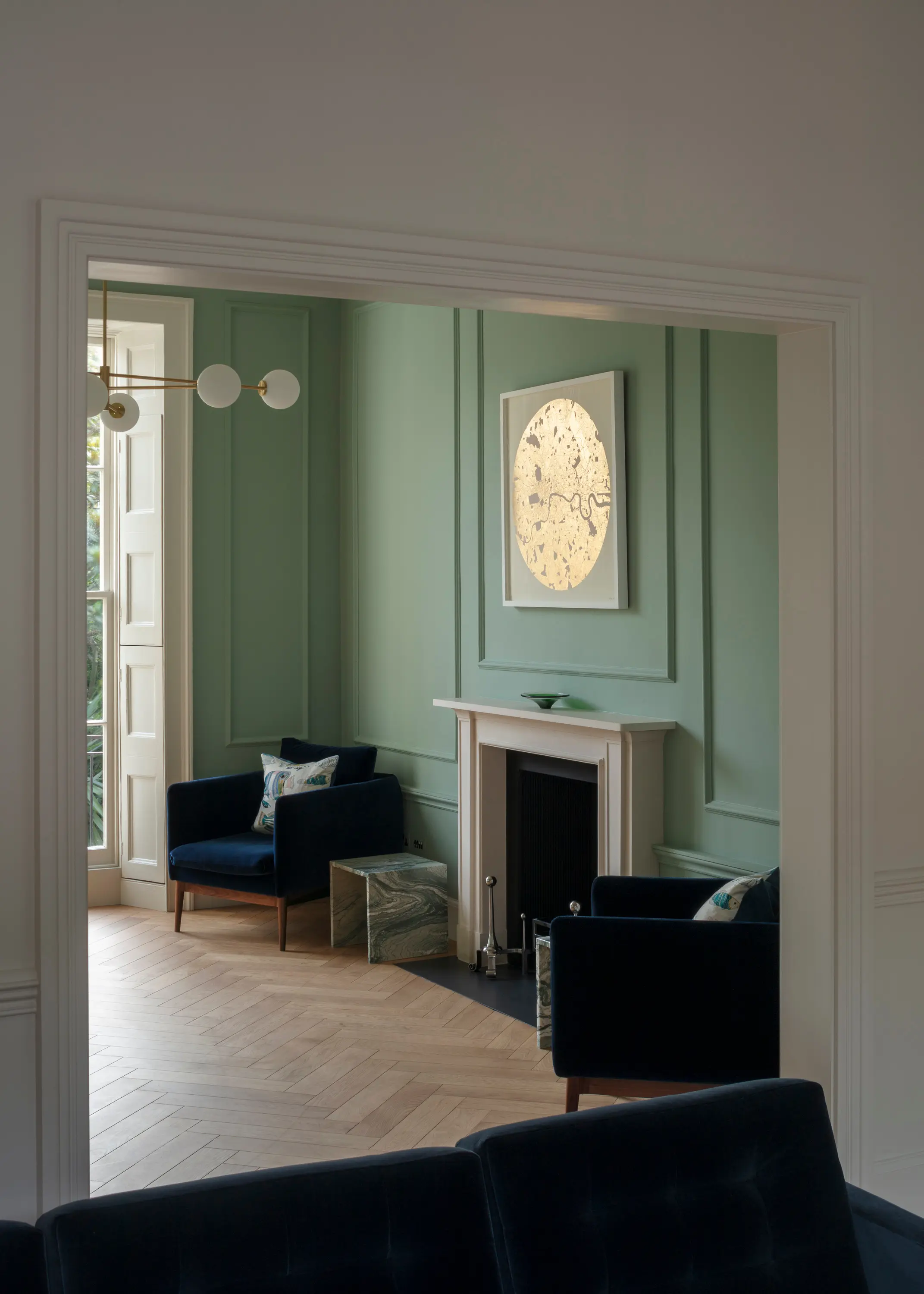April 2025
Reference
Flanders House

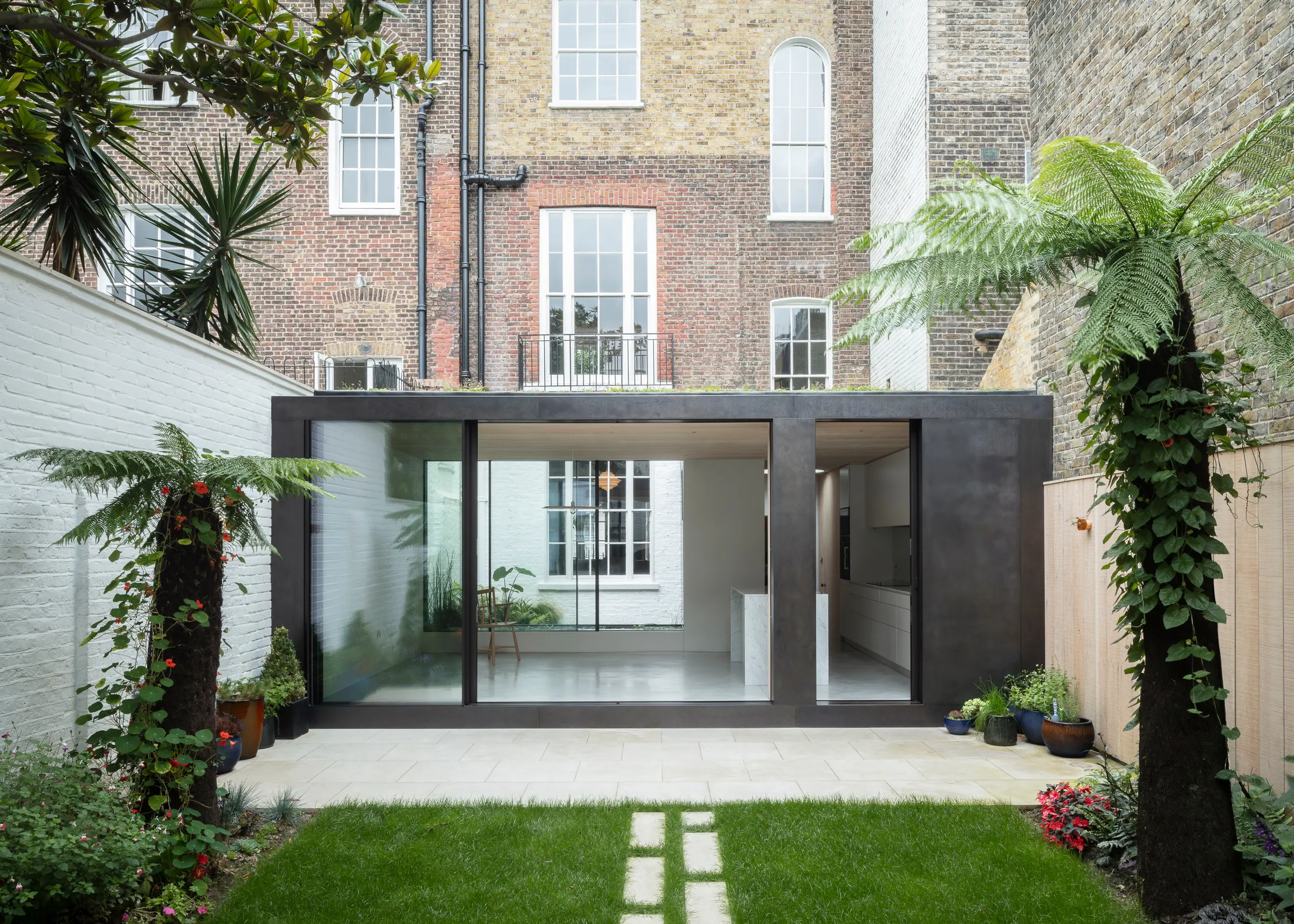
On a quiet street in Bloomsbury, this project returns two Grade II listed buildings back to a single house after being used as publishers’ offices since 1974. The change of use is a reflection in the diminishing significance of publishing houses in Bloomsbury and more immediately the relationship people now have with their home working environments.
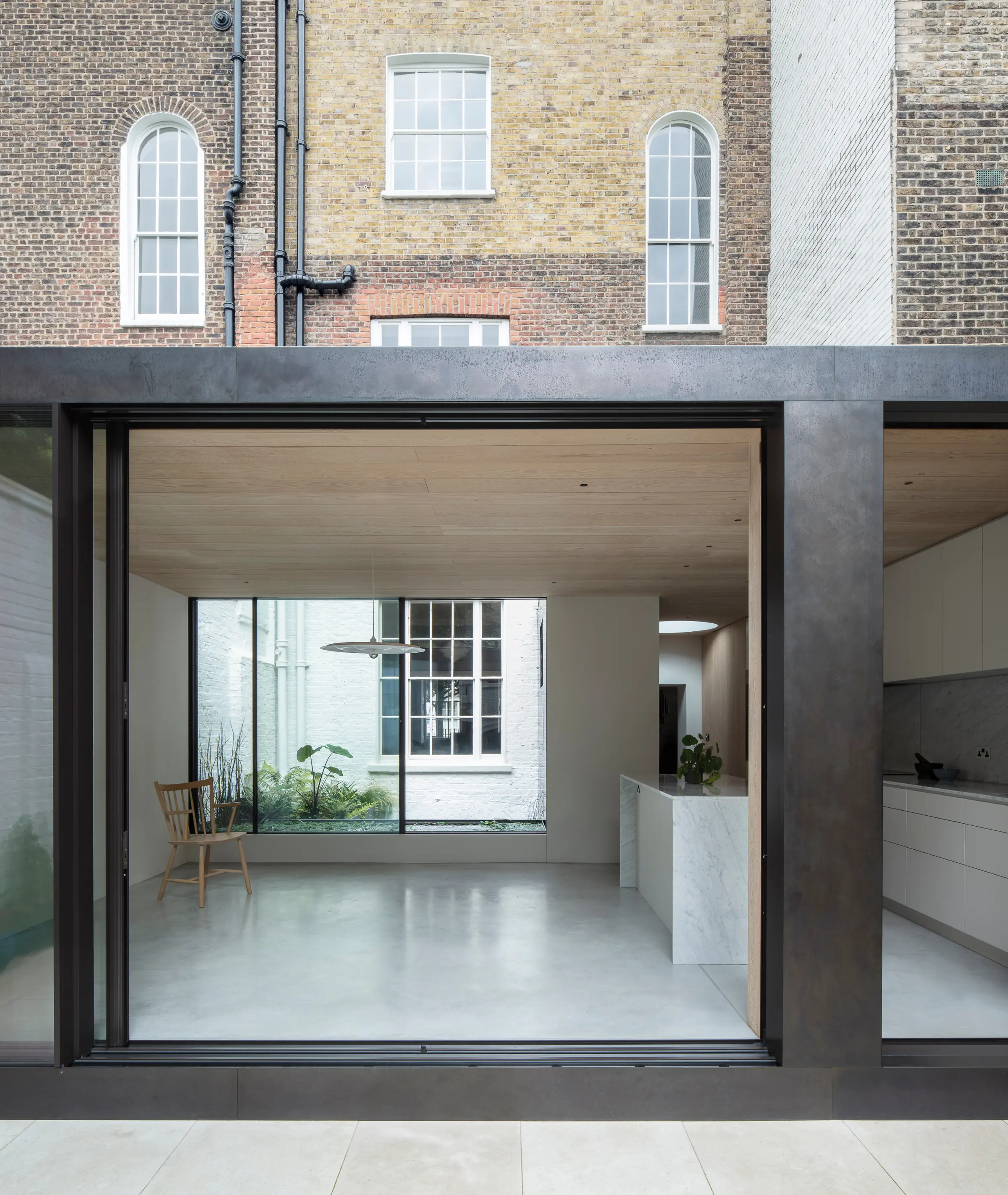
Natural connections
The project places a room, shared by both buildings, in the reinstated garden. The new element sits on the slab and foundations of a former utility building which was built to serve the offices when they were converted. Demolition of the service building results in the best-preserved window being revealed to the garden and mews for the first time in almost fifty years.
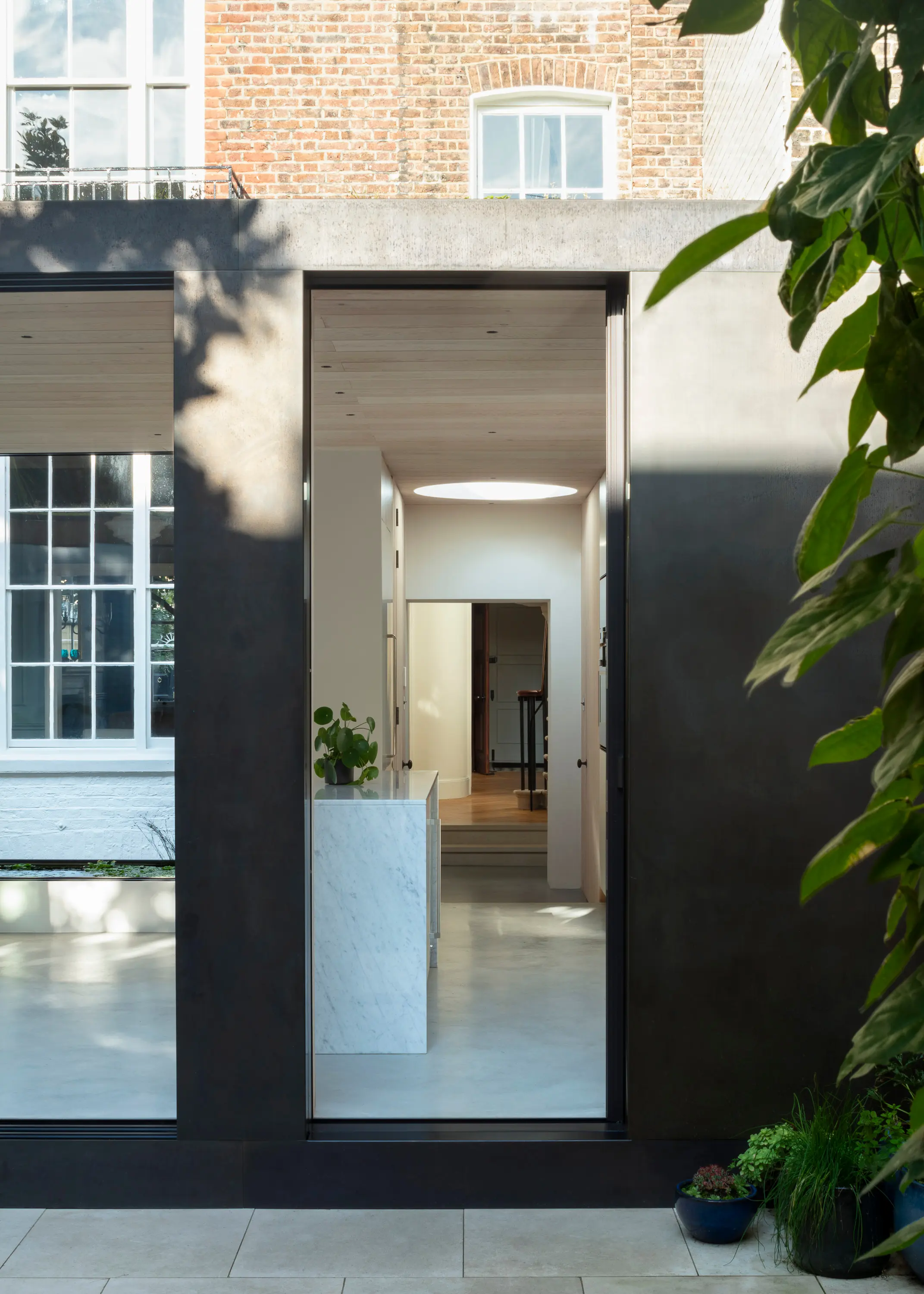
The new extension frames views into the garden whilst allowing light into the main house. New windows and doors are positioned to reinforce established connections, vistas and enfilades within the existing house. Nestling in the cavity between the new extension and main house is a pond garden. By providing the opportunity for planting on both sides, the notion of a room surrounded by garden was reinforced. Glimpses of nature are viewed from throughout the house.
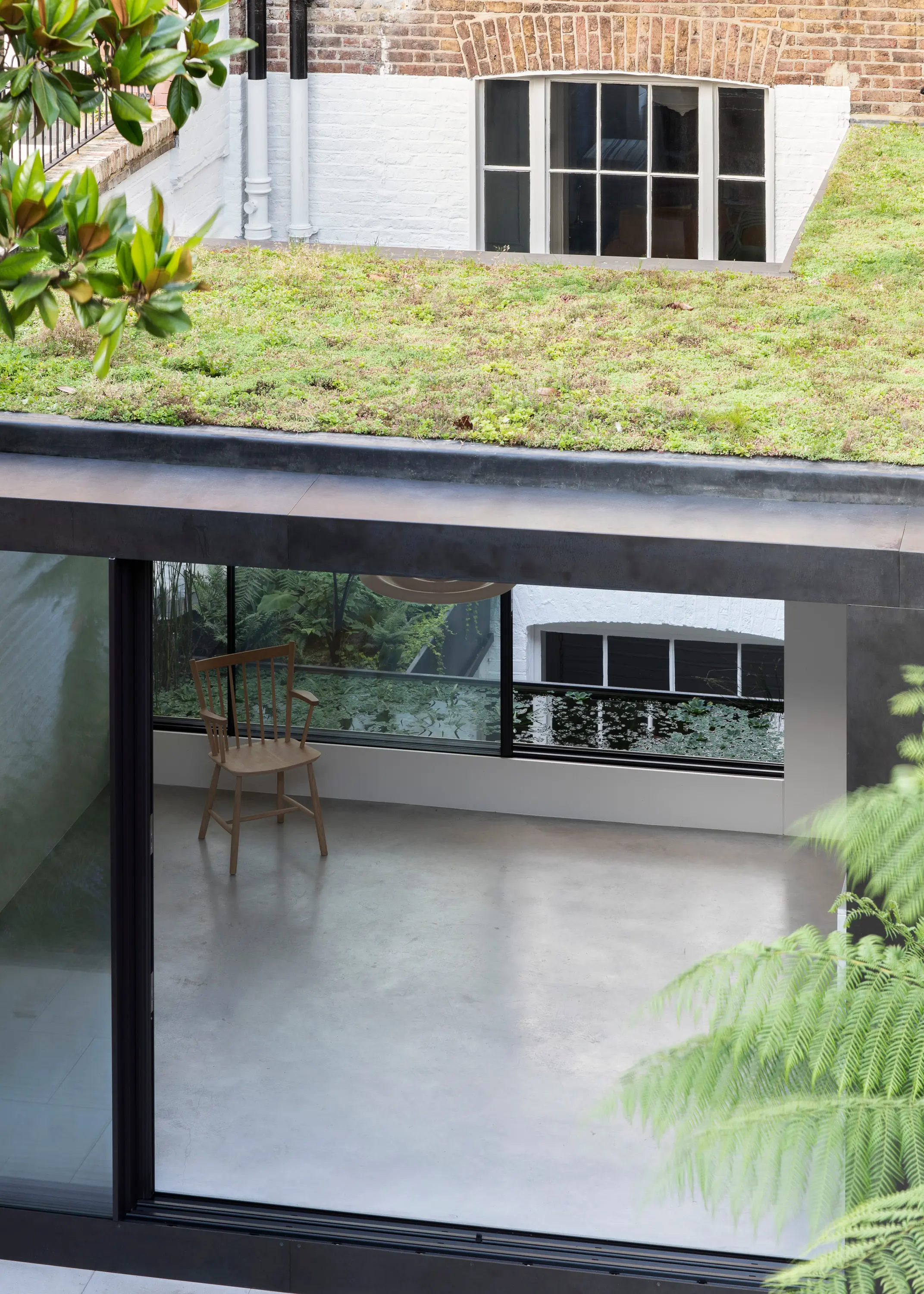
Material structure
The frame of the garden room is entirely timber, comprising two upstand timber beams that span the width of the site and bear on flanking walls built from bricks reclaimed from the demolition of the service building. The Douglas fir timber ceiling is structural acting as a stressed skin under the main timber members. All of which combine to reduce the visible edge of the roof to minimise its visual impact between house and garden.
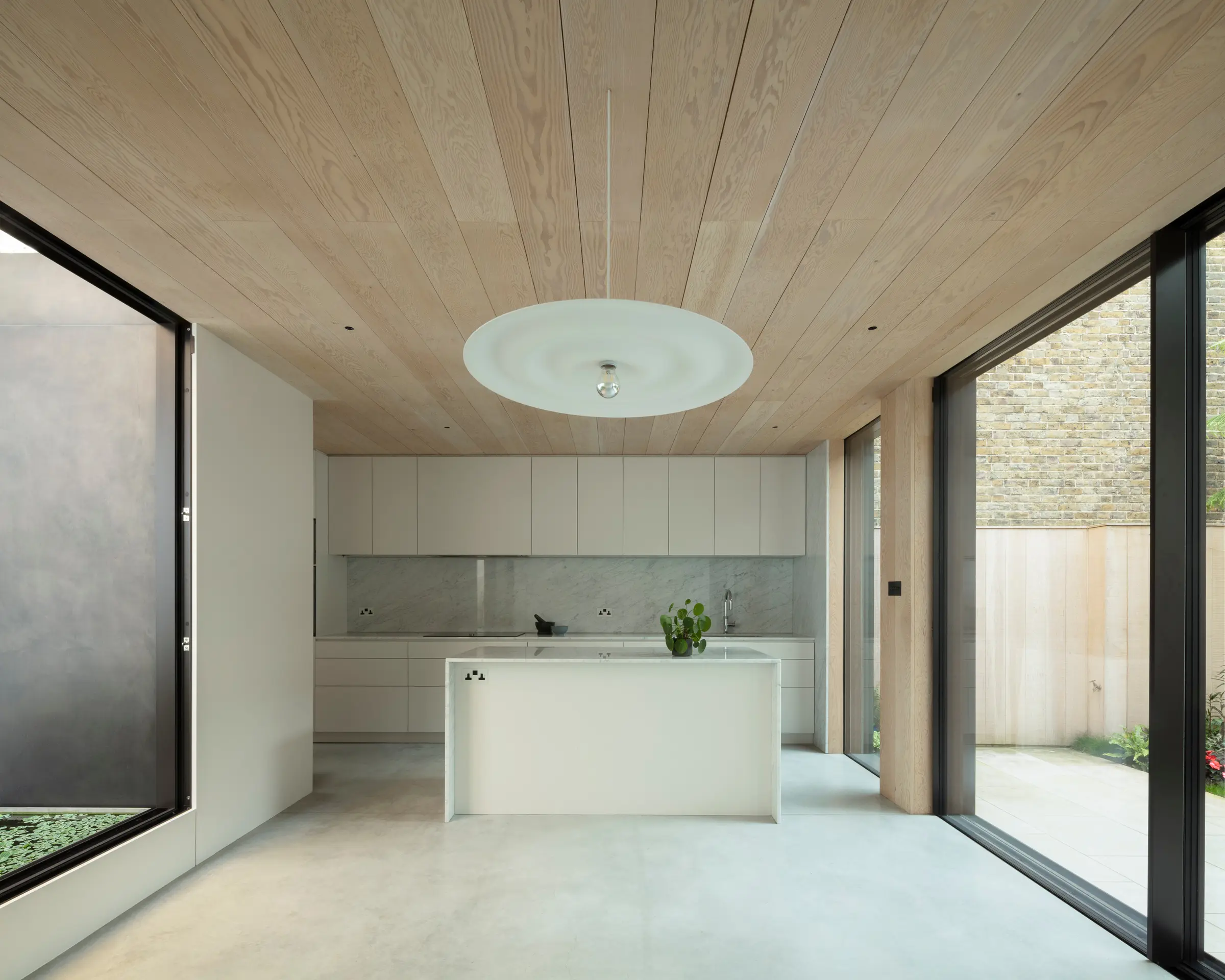
The two upstand beams are revealed from the view above in the house and mews. Set back from the edge of the roof they are also used to retain the green sedum roof. The frame is clad in 2mm patinated bronze sheets, the tone of which echo the surrounding brickwork.

Summary of events
The project started on site the day of purchase and whilst the sale was progressing, we had been working on the scheme to amend an existing planning application and listed building consent. Once on-site Initial phases were implemented under an existing listed building consent while we awaited new permissions. The main house has been refurbished with a particular emphasis on restoration of the finer rooms on ground and first floors. This includes the reinstatement of their original plan form which was lost when they were converted to offices.
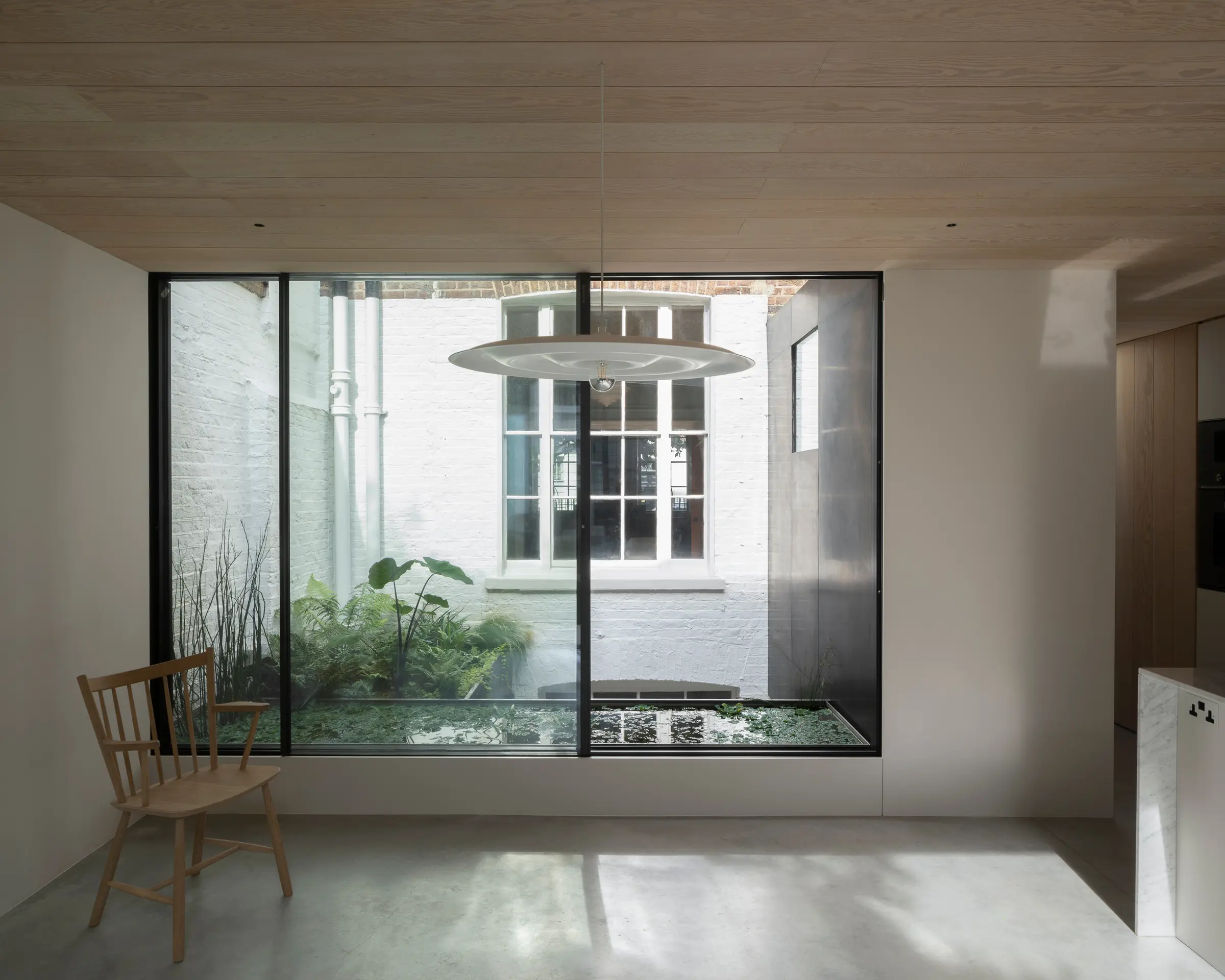
2020 and 2021 threw a lot at this project. Starting on site during a global pandemic, we had orders stalled by Brexit, trees delayed in the Suez Canal due to a stricken ship and light fittings manufactured in Beirut by a company whose HQ had been destroyed by the chemical explosion, weeks before we ordered them. The house already knew that world events can disrupt plans – roughly two hundred years earlier its own construction had been interrupted by the Napoleonic Wars.
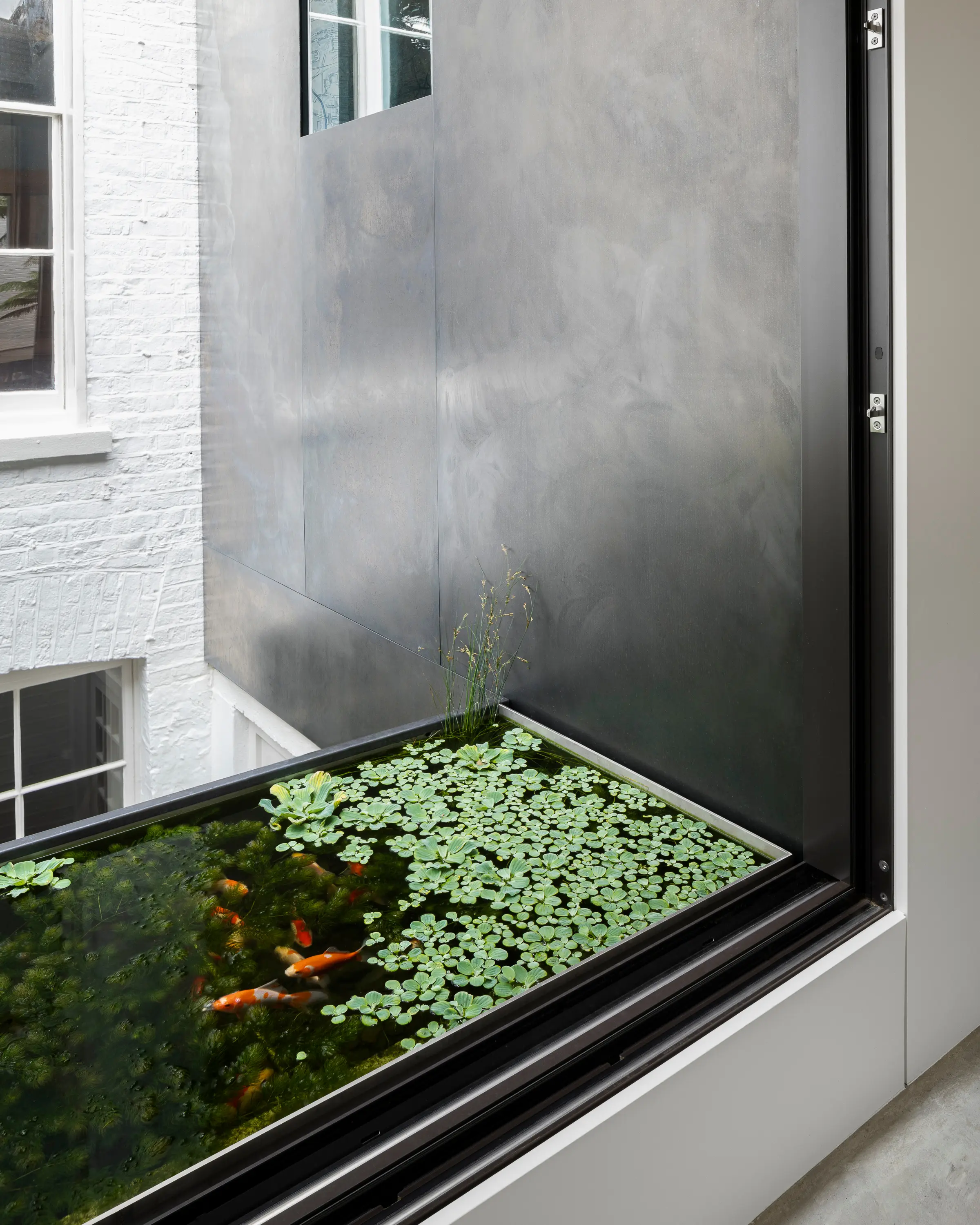
The character of the Georgian property has been restored, and now framed to re-capture it’s purpose as a family home.
